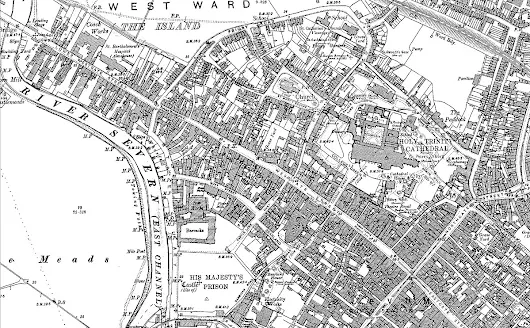
Gloucester's importance was confirmed under the Plantagenets the grant of its first charter by Henry II in 1155, which gave the to privileges equal to those of Westminster and London. On 28th October 1216 the nine year old Henry III was led from the Royal Palace at Kingsholm to his coronation in St Peter's Abbey. He is the only English monarch since the Conquest to be crowned outside Westminster. Henry was a deeply religious man who did much the church in Gloucester during his long reign. It was he who was responsible for the grants of oaks from the Royal Forest of Dean for the building of the Dominican and Franciscan Friaries in the town. Remains of both houses survive: Blackfriars - England's most complete Dominican Friary dates from 1239 and Greyfriars from the rebuild of the early sixteenth century. The house of the Carmelites or Whitefriars erected just outside the north-east corner of the town wall was similarly endowed but today, sadly, no trace remains. Henry's zeal for establishing religious houses was tempered by his political troubles. By a strange quirk of fate the city of his coronation became his prison when in 1263 Simon de Montfort held him captive in Gloucester Castle during the Barons War. Many significant parliaments were held at Gloucester in the following one and half centuries including one held by Henry IV in 1407 which paved the way for bringing public finances under parliamentary control.
The fortunes of medieval Gloucester were strengthened in 1327 at when Abbot Thokey accepted for burial at St Peter's Abbey the body of King Edward II who was murdered at nearby Berkeley Castle. During the next two centuries many people were moved to make the pilgrimage to Edward's tomb, resulting in increased wealth and importance for the city and abbey. Craftsmen began restoring and beautifying the church and by the 1470s the building had reached its present size, complete with exquisite fan tracery in the cloisters and the glorious tower of Abbot Seabrooke. In this period other ancient city churches were also rebuilt and adorned with Perpendicular style towers.
http://www.glosarch.org.uk/Gloucestercityresearch.html#MEDIEVAL
https://en.wikipedia.org/wiki/Westgate,_Gloucester
Gloucester quay and docks
http://www.british-history.ac.uk/vch/glos/vol4/pp251-258
